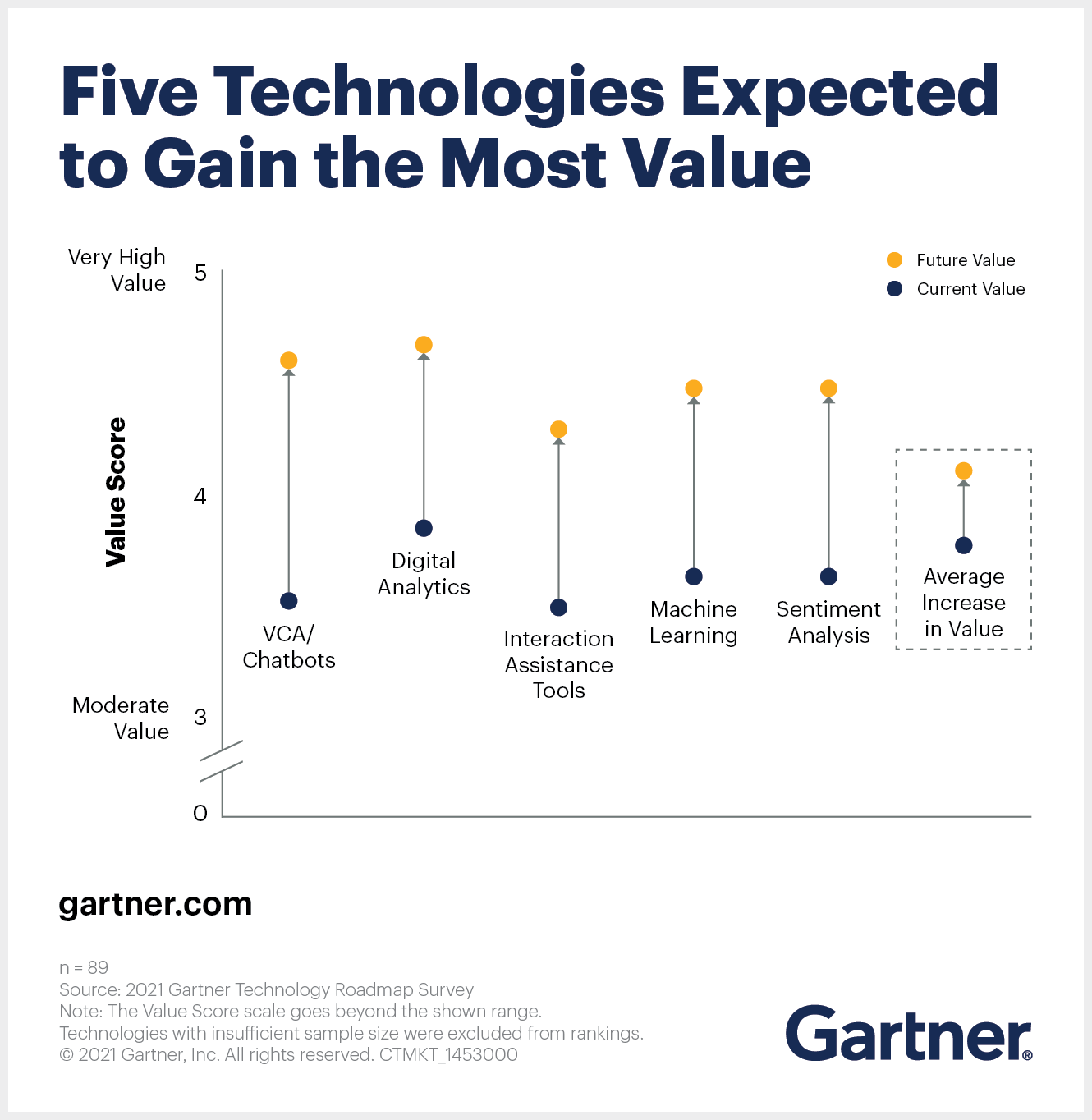Today’s hottest customer service technologies focus mostly on providing assisted service and freeing up support reps’ time — reflecting the increasing shift to digital self-service platforms and analytics capabilities.
These technologies reflect emerging technology trends designed to support a company’s ability to better understand and anticipate customer needs. An increase in ROI and deployment of these technologies indicate that leaders are looking toward a better experience for the digital customer.
“While the rep remains a valuable focus of technology investment trends, customer service leaders are signaling an increased focus on the value of analytics and self-service technologies that help understand and serve the digital customer,” says Connor Seidenschwarz, Principal, Research at Gartner.
Based on a Gartner survey of customer service and support (CSS) leaders across the globe, here are four key trends to watch in customer service technology.
Download now: Emerging Technologies in Customer Service and Support
Four key customer service technology trends
Trend No. 1: Technologies that enable reps are bringing most value to service organizations
Although artificial intelligence (AI), Internet of Things (IoT) and virtual reality (VR) are creating a lot of buzz within the sphere of customer service, it’s the employee-centric technologies such as workforce management, case management, consolidated desktop agent, internal collaboration tools and unified communications that currently deliver the most value to the customer service function. These technologies focus more on performance, monitoring and development to support:
-
day-to-day or intraday flexibility.
-
new operational needs to manage a hybrid remote workforce.
-
new demands and expectations of customers.
-
rising expectations to deliver enhanced customer experience.
Trend No. 2: The future lies in understanding the preferences and behaviors of digital customers
In the coming two years, digital self-service channels (e.g., online account portals and mobile applications) and predictive customer analytics are slated to become the most valuable capabilities for service organizations. Digital self-service channels offer a tremendous cost savings opportunity for service organizations, and CSS leaders should invest in analytics to understand and predict customer behaviors on these channels and enhance customer experience.
Trend No. 3: CSS leaders expect most gains from data and analytics
CSS leaders indicate that in the next two years, the focus will not only be on analyzing customer data using digital analytics, sentiment analysis and machine learning, but also leveraging that data to make informed decisions using the actionable insights.
For example, virtual customer assistants (VCAs)/chatbots and interaction assistance tools can make use of the insights provided by speech and text analytics to better understand the customer language and intent behind queries. These insights enable VCAs to read between the lines and recommend an optimum course of action for customers.
Trend No. 4: Substantial investments on the horizon in the deployment of AI and chatbots
CSS leaders will invest heavily in VCAs/chatbots and AI in the next several years, according to the Gartner Technology Roadmap Survey. Today, only one in four service organizations are fully deploying these technologies, but 37.5% of CSS leaders are running pilots or plan to deploy chatbots by 2023; 36.3% of them are doing the same for AI capabilities. Other capabilities for which customer support and service leaders are running pilots include speech analytics, predictive analytics and mobile-based messaging.
Recommendations for CSS leaders
As the technology landscape rapidly advances, CSS leaders must make difficult investment decisions. Those responsible should:
-
review core service objectives, understand customer preferences and behaviors, and conduct a thorough market scan to select and prioritize technologies for investment.
-
collaborate and coordinate with other functions, including IT, marketing and finance, to understand existing plans or technologies, their perspectives and potential areas of coordination.
-
gather data on customer behaviors and experiences to identify technology’s current and potential role in the customer service journey.
-
assess the performance of your existing technologies by evaluating usage, cost, customer experience, rep experience and strategic relevance, and how they fare against market trends.
![]()
The post 4 Key Tech Trends in Customer Service to Watch appeared first on Smarter With Gartner.

